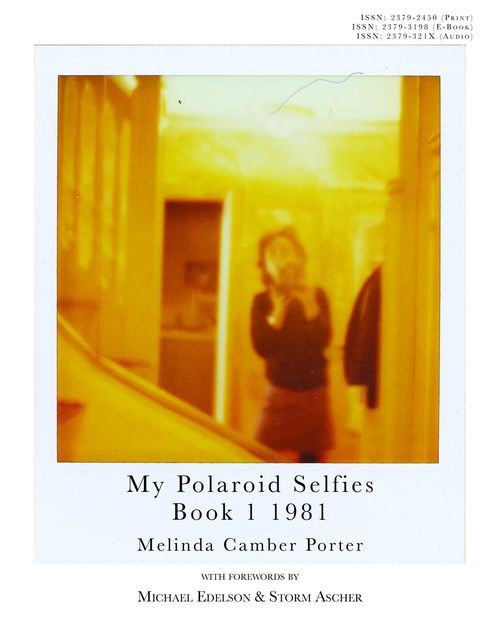My Polaroid Selfies 1981 Book I: Volume 2
- Marcie Mata Dhar citeretfor 4 år sidenThe nature of the iPhone selfie which dominates the Polaroid trend in mainstream millennial culture gives an answer to artistic questions so quickly that we have stopped asking. The question of “do I look timeless? do I look like a work of art?” is something to interact with spiritually and artistically. When looking at the camera while taking a selfie, Melinda wasn’t thinking about what many people would say, she was thinking about “how will I present myself to myself, to inspire and comfort myself? How will I merge my idea of self with the actual image?”
- Marcie Mata Dhar citeretfor 4 år sidenid, because of the begging yet still not instantaneous mechanical nature of its processing of the image. How the photo will reflect back at her as a person is chosen by the camera, and this makes the process more raw, as she interacts with her medium rather than assembly lining it.
- Marcie Mata Dhar citeretfor 4 år sidenAn image capture is more unforgiving and unprepared when taken by a Po
- Marcie Mata Dhar citeretfor 4 år sidenthis authenticity is a retrospective study of oneself in all states of mind, all parts of private life, in transition from one moment to another,
- Marcie Mata Dhar citeretfor 4 år sidenhe current “selfie” aesthetic is anything but that, and this shows how a mainstream cultural phenomenon comes to be when it was once considered a one-of-a-kind work of art
- Marcie Mata Dhar citeretfor 4 år sidenThe self-portrait is the most dominant practice of the camera today. In response, the Polaroid is back as a medium for many artists who feel that in this digital age of reproduced images, a physical print is best. The multimedia practices of the millennial generation also lean toward the element of immediacy of the Polaroid. We use nostalgia as a means for revisiting certain aesthetics that still serve us, throughout all creative industries. We pay homage to old techniques and sometimes give them a meaning that was not initially intended by the original thinker. For the creative fields to maintain the avant-garde status, there always has to be a separation from the mainstream trend; this era being the clutter of images of the self. Millennials have a deep rooted nostalgia for printed images because of the popularity of the Kodak disposable camera in the 90’s, a step backwards from the instantaneous Polaroid, which would later be our most iconic personal images, as this was before digital reproduction came to be the standard. Having an idea of ourselves at a young age is only available in some hundreds of prints and we build a narrative off of those images. But who we are in this era changes everyday, and we have become obsessive with portraying ourselves as the best version thus far, because we have documented and shared too much to even look back at each moment as particularly special. We no longer have a feeling of a moment frozen in time, as we even have the technology to produce “live” images and GIFs of every moment.
- Marcie Mata Dhar citeretfor 4 år sidenIn the second foreword to this title, Storm Ascher, a Millennial artist and photographer based in Los Angeles and New York, states: “The self-portrait is the most dominate use of the camera today... Melinda Camber Porter had an ability to transcend the element of time in all of her work; representing images and writing about personal experiences that could ultimately be an overall expression of the human experience. She understood this phenomenon of documenting the ‘self’ before it was coined the “selfie” by the Millennial generation.”
fb2epub
Træk og slip dine filer
(ikke mere end 5 ad gangen)


